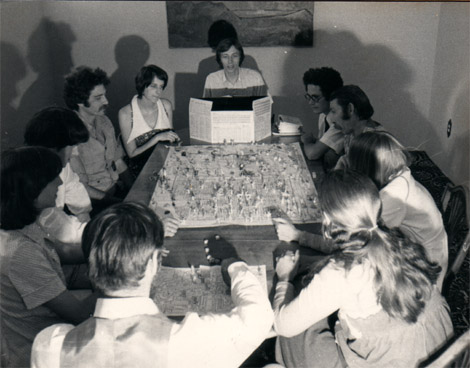 Long, long ago, in what I like to call ‘the before time’ (late 80s, early 90s), I read a piece of advice that would stay with me to this day. In a random comic book (X-Men, I vaguely remember), they had a couple of pages with some advice for potential artists/writers that wanted to come into the comic book world. Now me not being able to draw to save my life, I focused on the bit dedicated to writers. And it said something like this: Start small. Most comics and/or stories we get from would-be artists somehow have the X-Men, Galactus, The Fantastic 4 and Doctor Strange, all interacting and fighting in the first few pages. No one will believe or care for that. Start small, tell us what’s happening with the little guy. So that got me thinking, what is the best way to actually get a story out there? Not only published, I mean, how do you get a story/setting/RPG environment that the players engage with? 1. The little guy. Possibly the most important entity in RPG’s. Is it a coincidence that so many D&D games, throughout the generations, have started in taverns? That great melting pot of races and people? I think not. The characters, as extraordinary as they might be, have to be recognizable as ordinary, if only for a little while. (Perpendicularly, I feel this is the issue with Superman in movies, he’s too…. Super!) At the end of the day, if you don’t identify with the character you’re playing, you might as well be watching a movie. 2. NPCs have funny voices. Well, not necessarily funny voices, but they do need a hook. Maybe a scar, or a limp. Or yes, a funny voice. If you’re playing more than one adventure in that setting, do it. In two adventures time, when you bring the NPC round again, you’ll be rewarded with many a smile, and eye-rolling: ‘Not him again!’ NPC’s are your lifeblood. They are the way the GM interacts with the party, don’t underestimate them. 3. Invoke atmosphere, paint a picture. Don’t just say it’s a forest. How dark is it? Also, you’ve used only one sense so far. You have 4 more. What does it smell like? What can you hear? The wind? A stream? Fill in details, small ones, but if you use all the senses, it will be much more enveloping and engaging. 4. PROPS! For next to nothing, sites like Amazon and Etsy can provide you with countless small bits and bobs to help your adventures. I LOVE props. There’s the random map, of course. And then there’s the cheap plastic necklace, or the even cheaper bracelet that are now priceless magical items. I’ve used broken plastic jewels as gems and cheap plastic reproductions as the mystical Jade Dragon pendent (a necromantic stone). Make your players handle the prop. At that moment, it will become real to them. 5. ALL THE QUESTIONS! When I create a new game, in a new environment, (what I mean by world-building), I try and keep a couple of main sentences in my head. What is this Place about? Where is it? Why is it there? How is it there? Why should we care? These don’t need to be extensive answers, just enough to give you a working framework. 6. Dive down. Then, I aim to bring the focus down to street/path/trail level. Who are the people in it? Who would you cross paths with? What would the people look like? Would they identify with you, will they recognize you as a friend or as a foe? Are non-humans accepted or would they be discriminated against? It’s all well and good to play a Dragonborn, but not as fun if your presence will make every NPC want to kill your party. 7. Start at the bottom. How many times have you RPG'd a king? An emperor? The ruler of all you surveyed? Me? Zero. Oh don't get me wrong, I've interacted with princes, and dukes and kings. (Famously getting my character obscenely drunk after failing 4 Persuasion rolls in a row. And there was an insane duchess and an open bar. It's a long story.) But I've always played the little guy. Literature has been doing this for millennia. Lord of the Rings, Star Wars, you name it. Little guy? Overcoming insurmountable odds? There you go. These are the stories we care about. We need to identify with the characters, and feel we are in that environment. They can be mutated zombies wielding ray guns from dimension Z, but they need to be as flawed and as recognizable as ‘human’ in terms of fallibility as we are. You can play your RPG as a strategic game, with rulers and line of sight and distances. I have, and it is great fun. But for me, nothing beats a bunch of friends around a table, Role-playing. As the little guys. Rui is a scientist and teacher, but he's only been RPG'ing for a bit over a year. What he did with the rest of his life is not documented. When he has some free time, he can be found planning games as the GM, usually involving much paper, props, some maps and assorted core books. He likes pizza, the colour blue, cats and sci-fi. The reports that he wants to play a blue pizza-eating cat in a sci-fi RPG, are unsubstantiated. Leave a Reply. |
All blog materials created and developed by the staff here at High Level Games Archives
April 2023
Categories
All
|
Proudly powered by Weebly



 RSS Feed
RSS Feed